Sharks that can attack
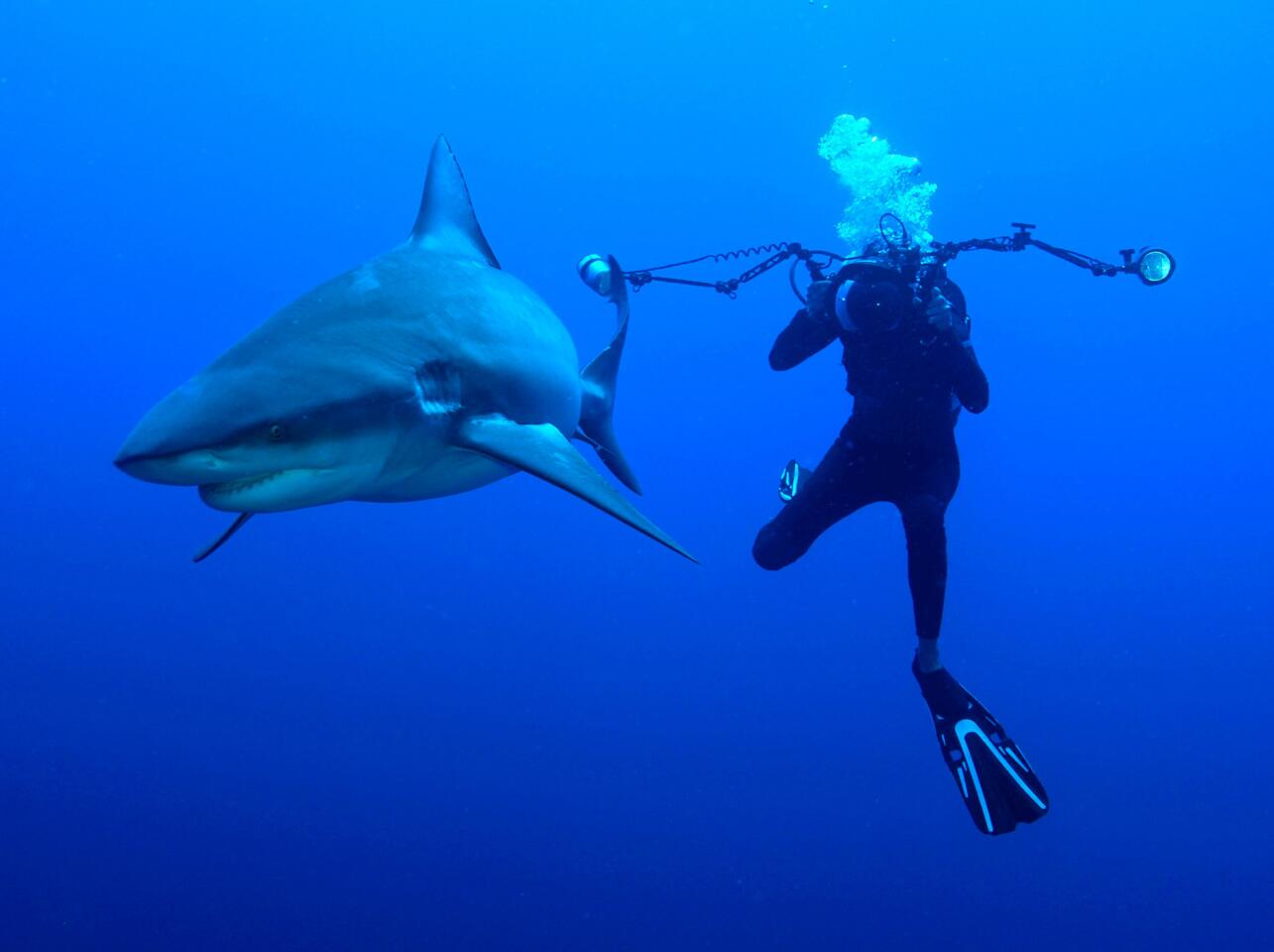
Underwater photographer Fiona Ayerst captures a picture of a bull shark off the coast of Mozambique. Bull sharks are among the “big three” that researchers consider most deadly because they are commonly found in populated areas where humans enter the water and because they are large species whose teeth are designed to shred, not hold. (Barcroft Media / Getty Images)
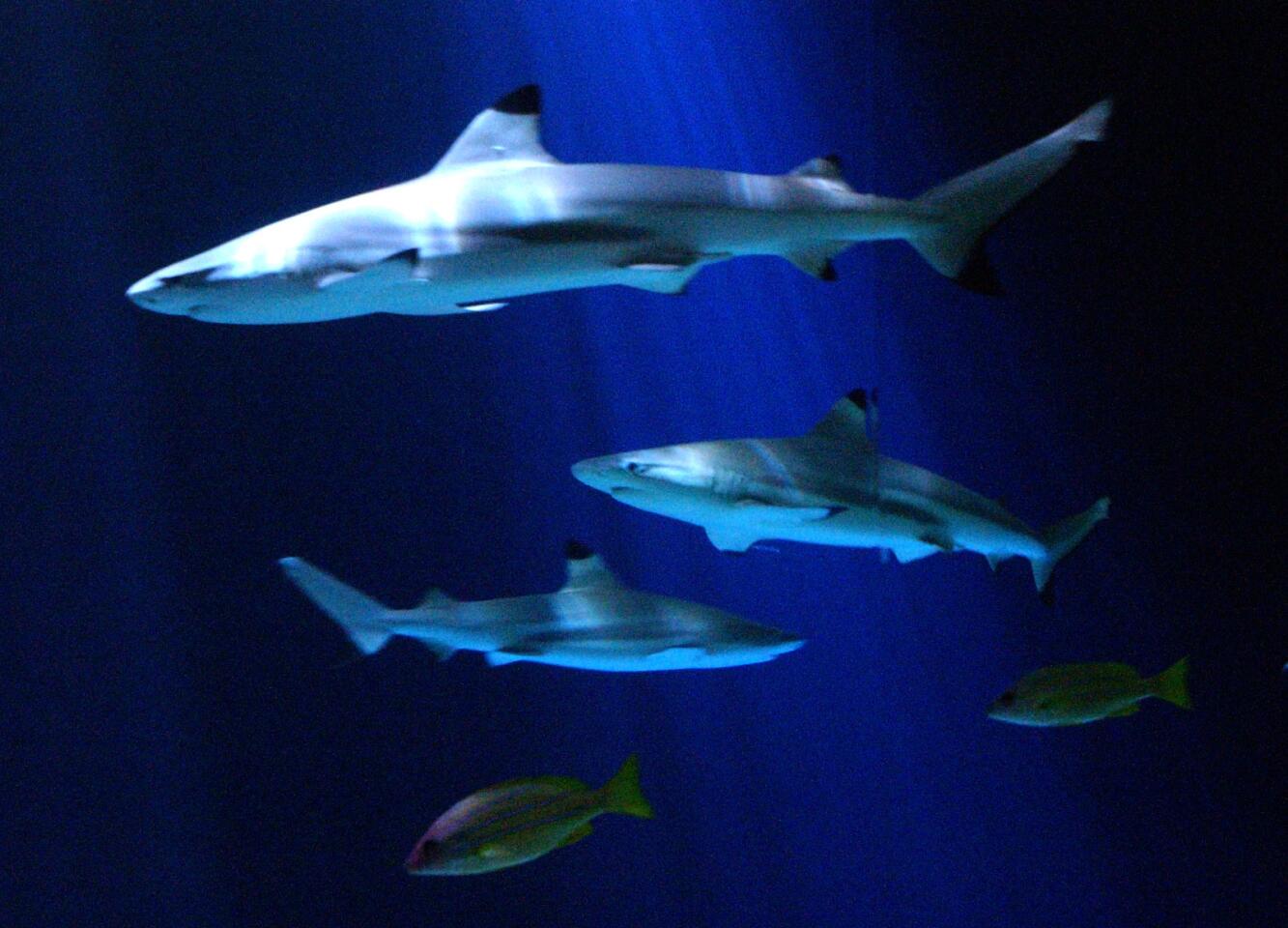
Blacktip reef sharks at Chicago’s Shedd Aquarium are shown. In Florida, blacktip sharks and bull sharks accounted for about 40% of attacks from 1920 to 2012.
(Alex Garcia / Chicago Tribune)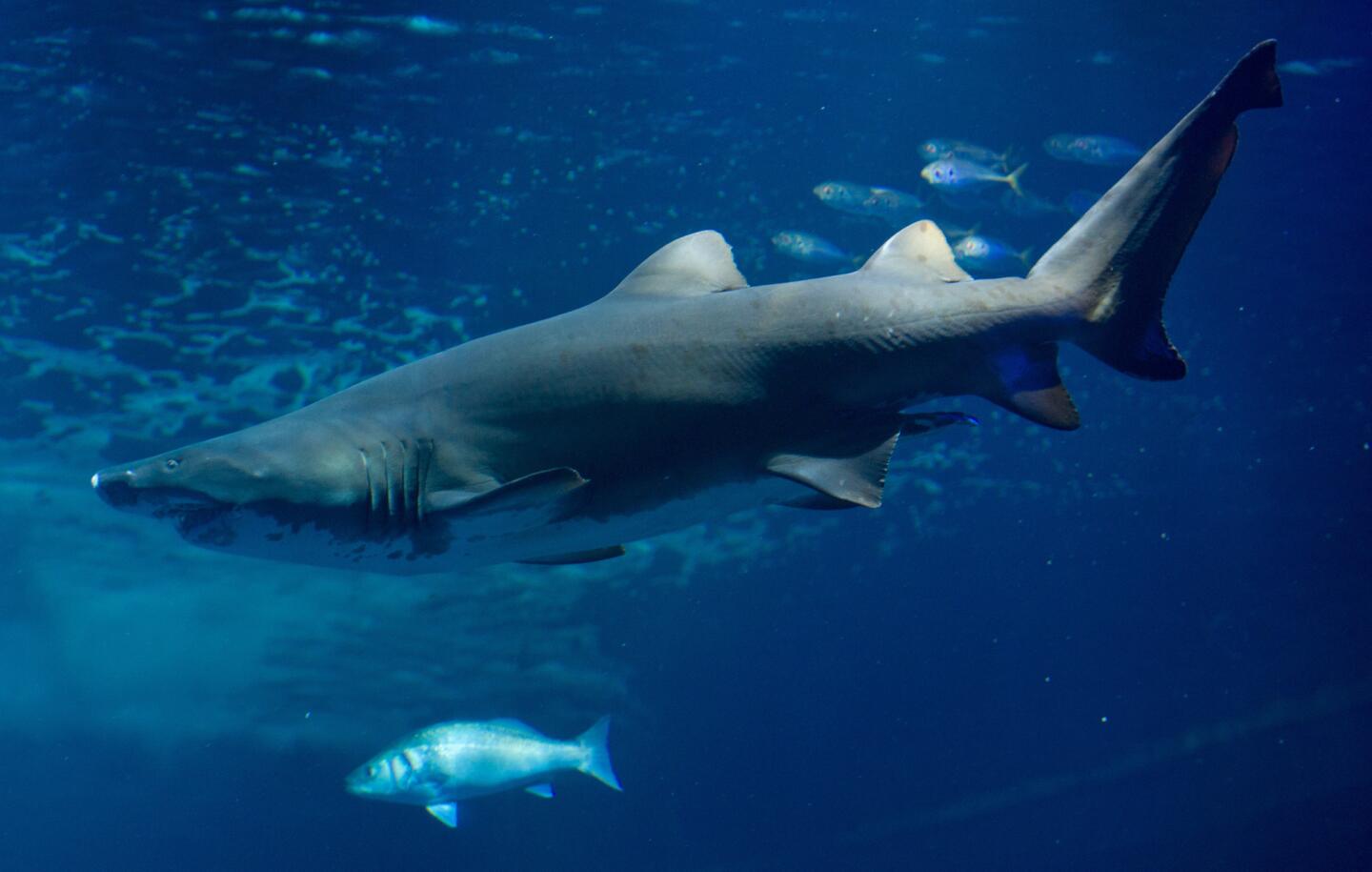
Sand tiger sharks live close to the shorelines and sandy beaches of North America and in the waters of Japan, Australia, and South Africa. They are one of the “big three” of deadly shark species because of the frequency of attacks and because they are a large species whose teeth can cause serious injury. (AFP/Getty Images)
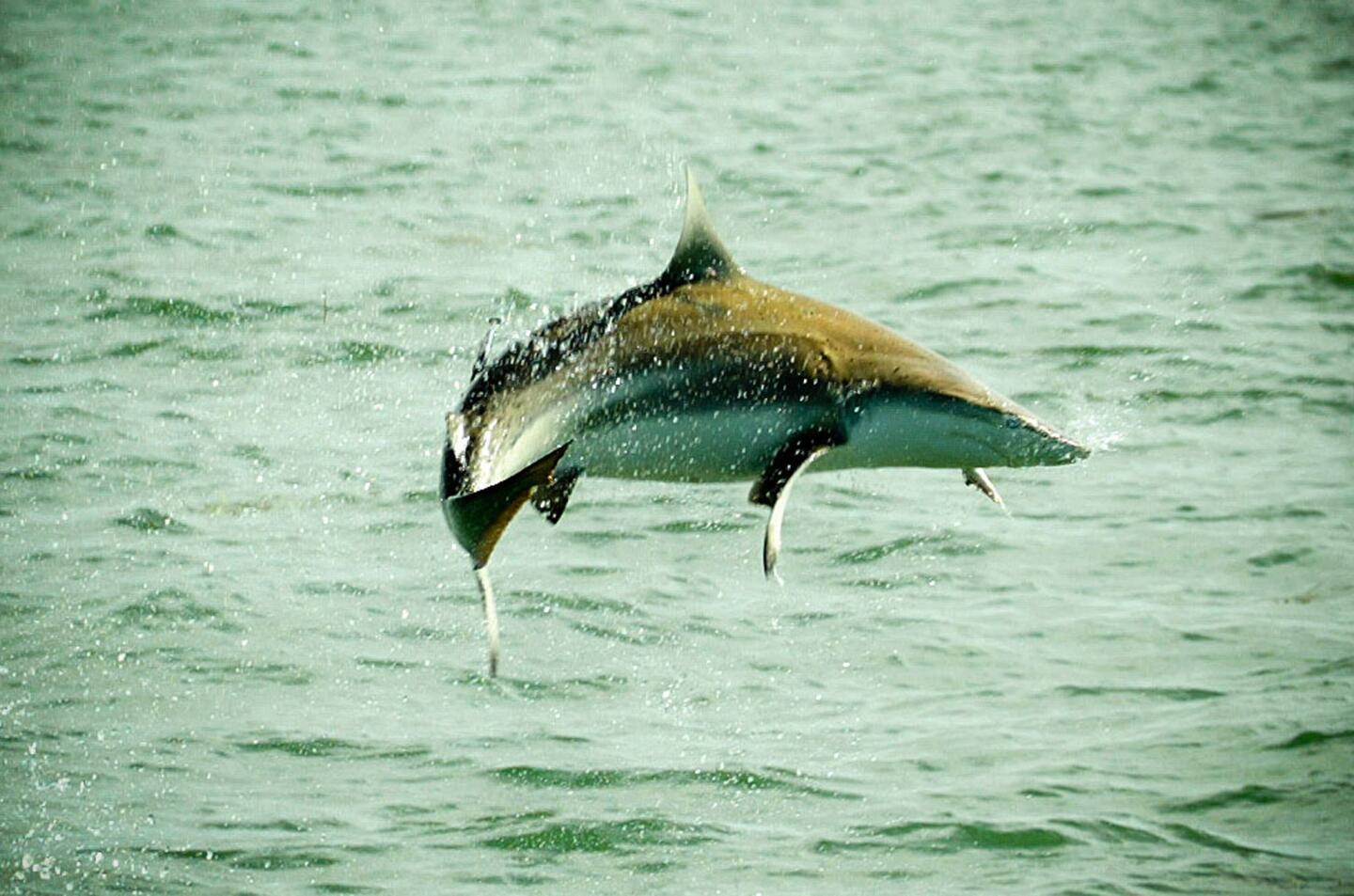
A spinner shark jumps out of the water in the Florida Keys. Spinner sharks are responsible for about 16% of Florida shark attacks since 1920, according to the International Shark Attack File.
(Ronald C. Modra / Getty Images)Advertisement
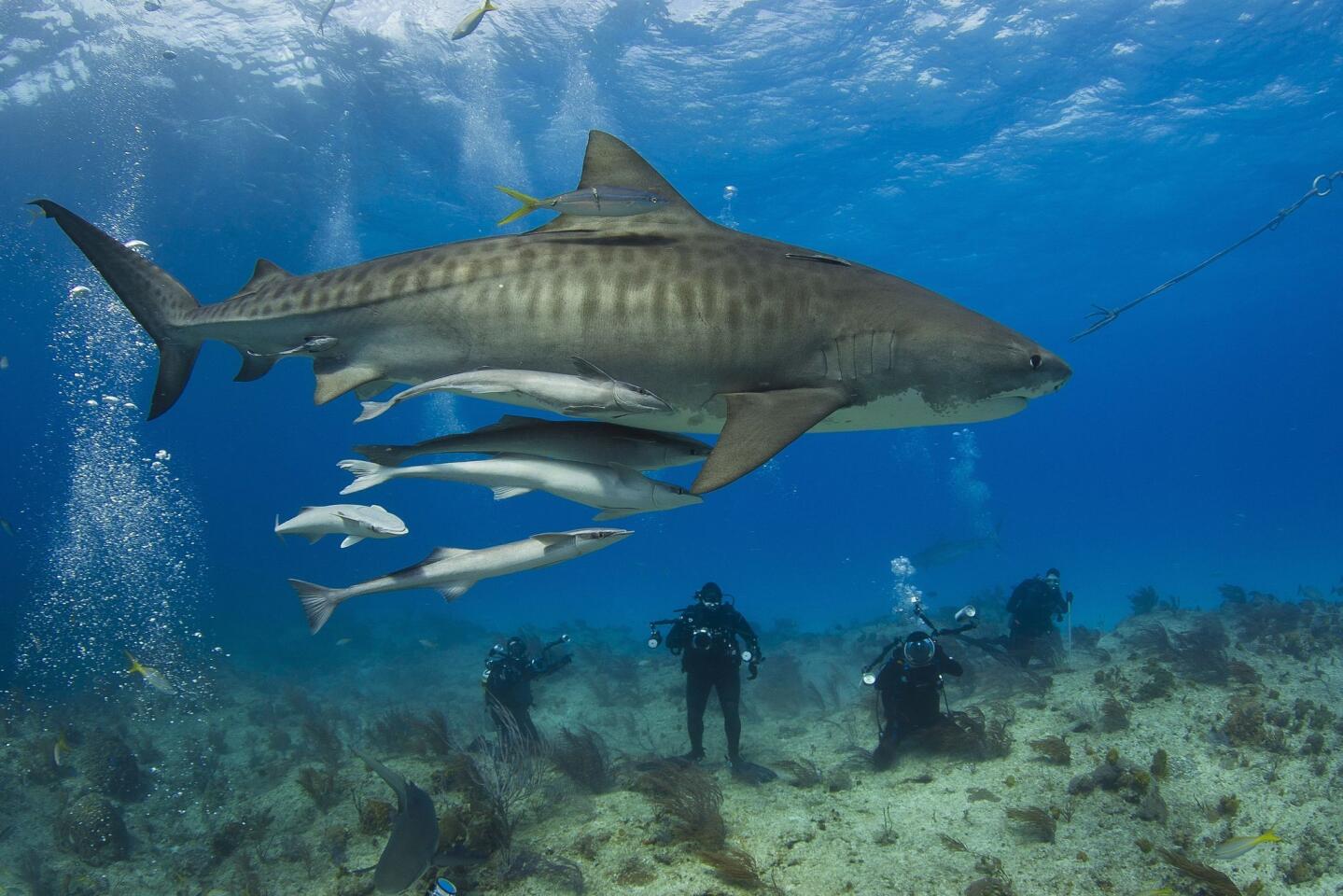
Members of the R.J. Dunlap Marine Conservation Program from Miami University observe an untagged tiger shark in the Caribbean Sea, west of the Bahamas. (Barcroft Media / Getty Images)

At Manhattan Beach in July 2014, lifeguard Natalia Vecerek patrols the beach, telling people to leave the water after an early morning shark attack left a swimmer injured. (Rick Loomis / Los Angeles Times)
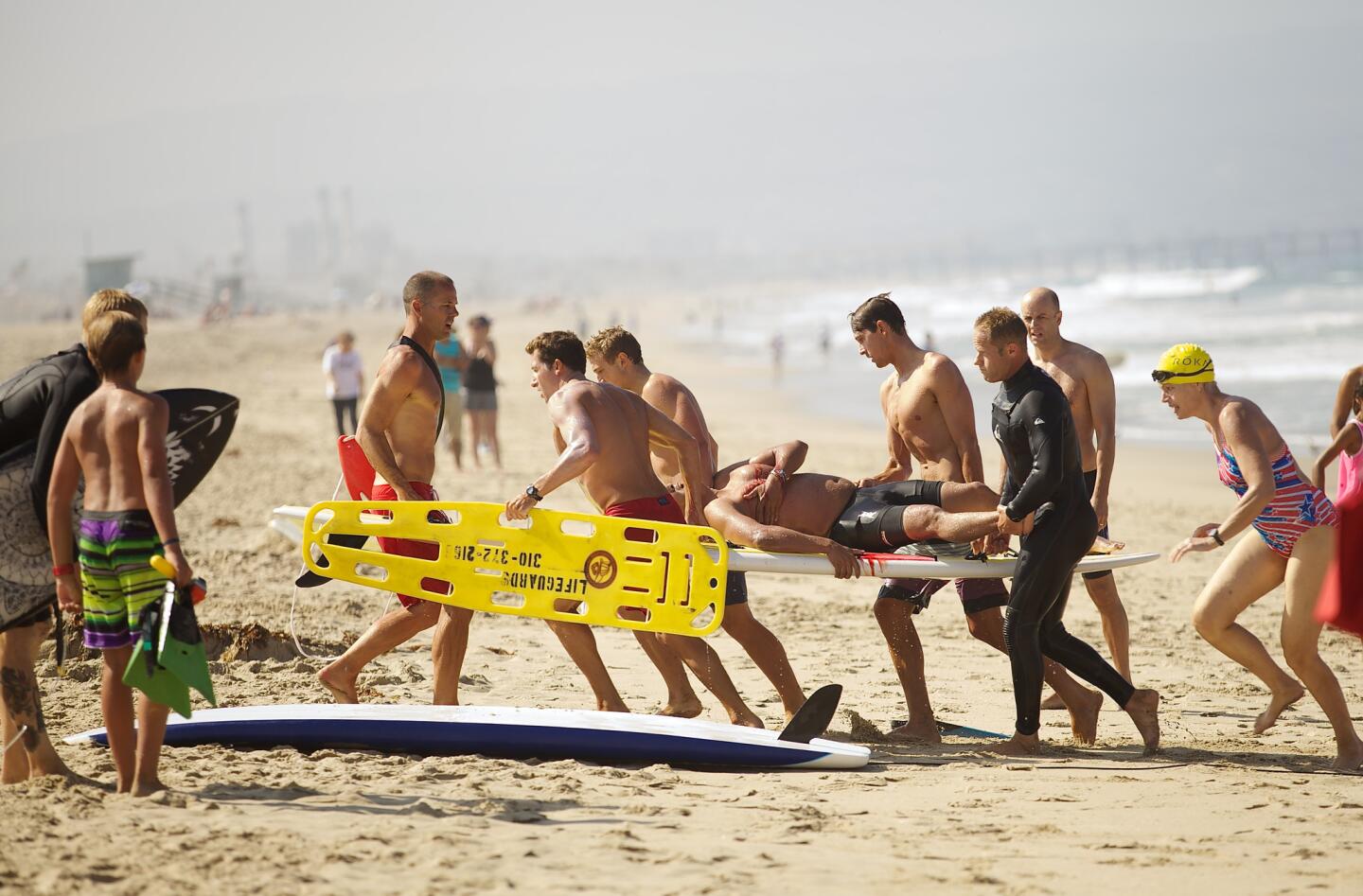
A shark attacked a swimmer near the Manhattan Beach Pier in July 2014. (Laura Joyce / goofyfootphotography.com)







